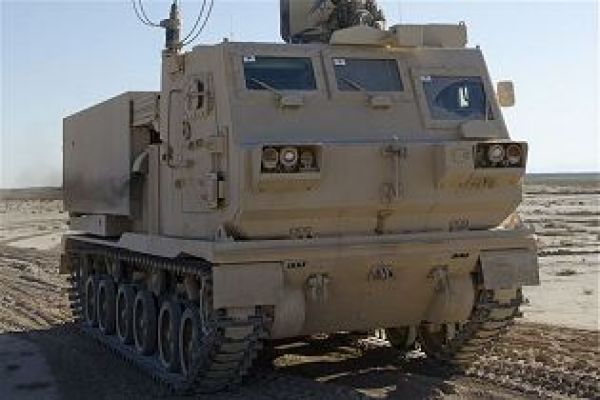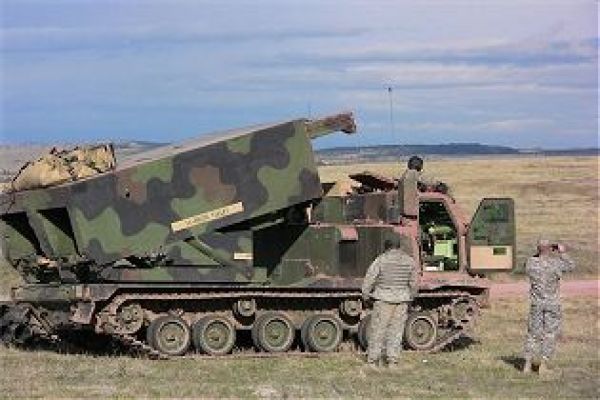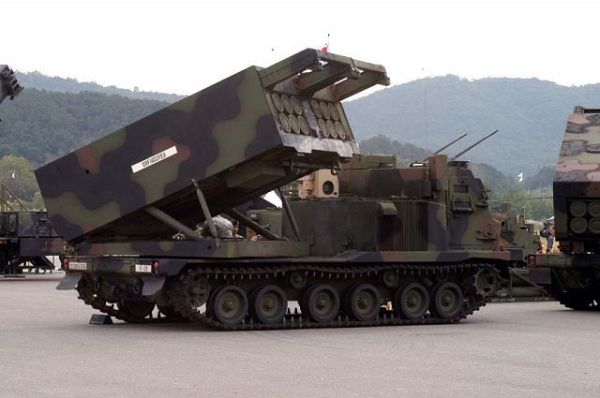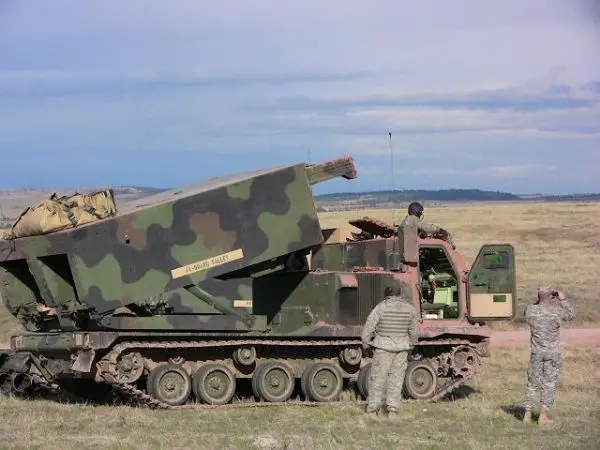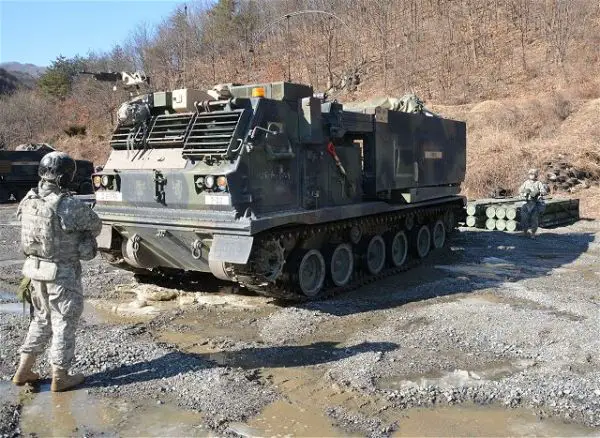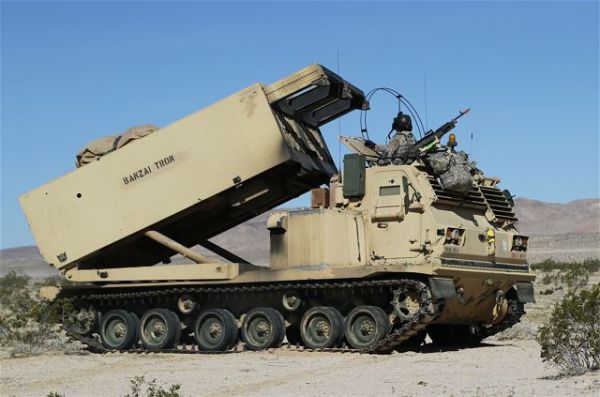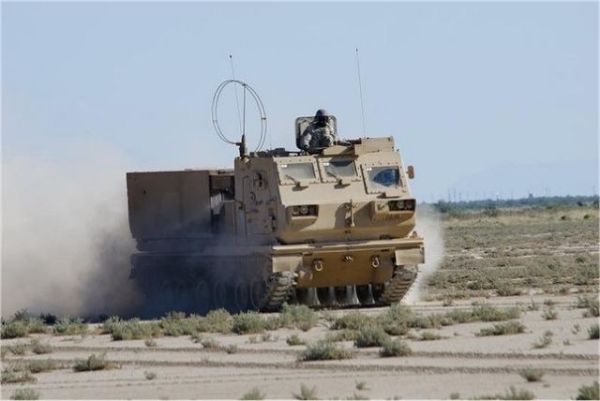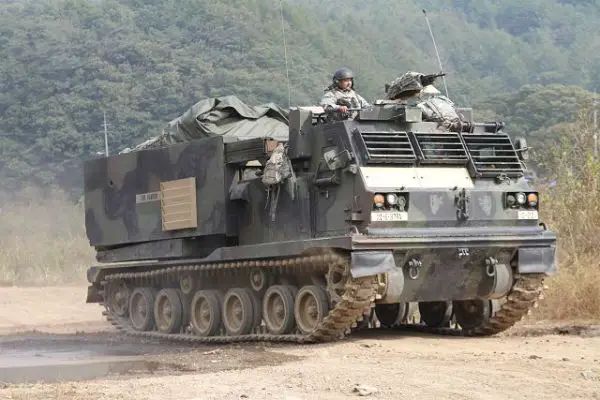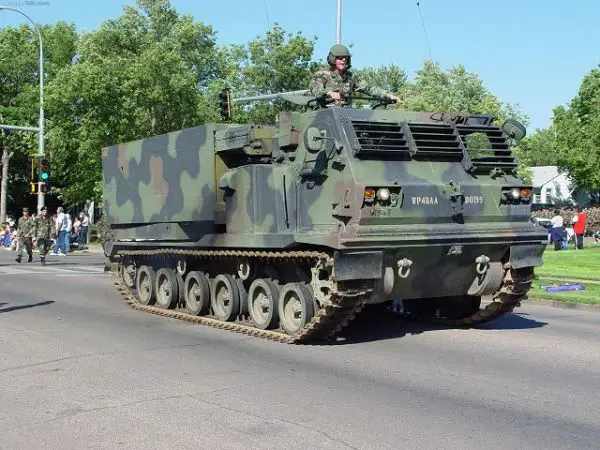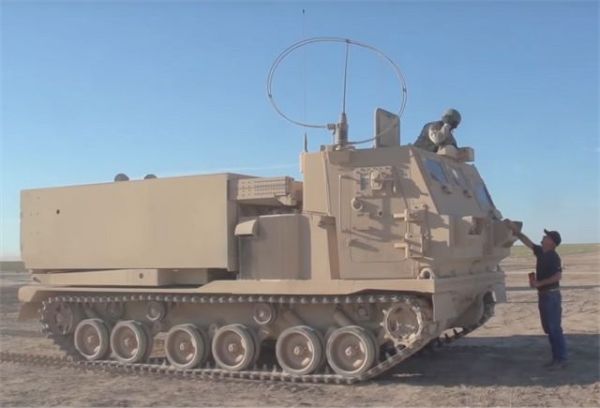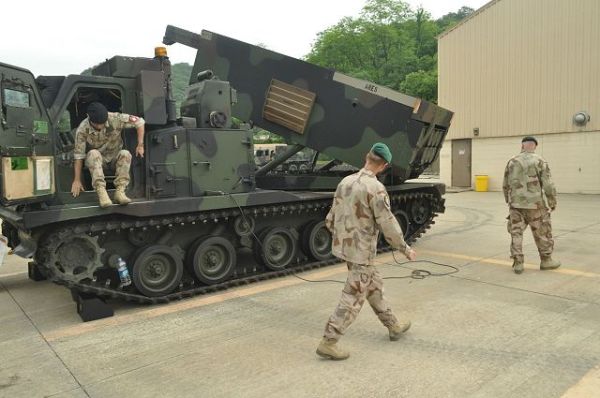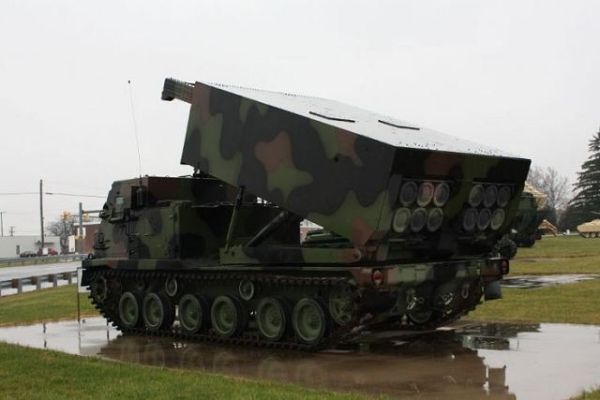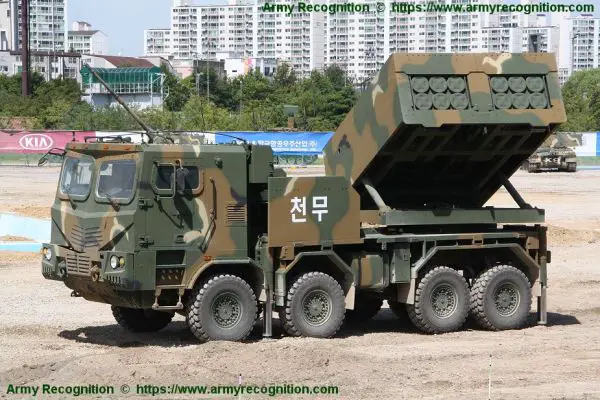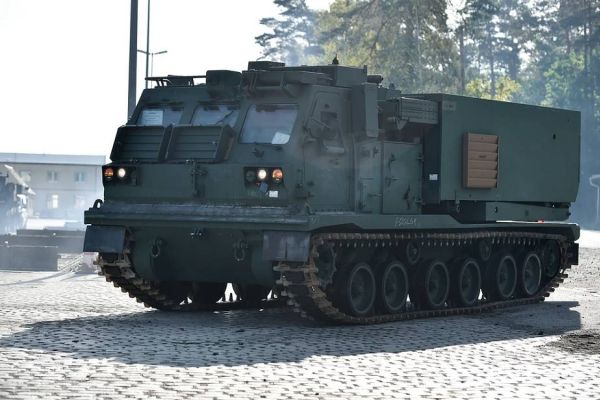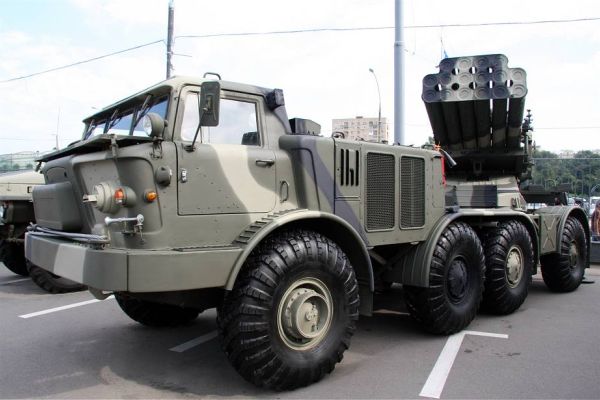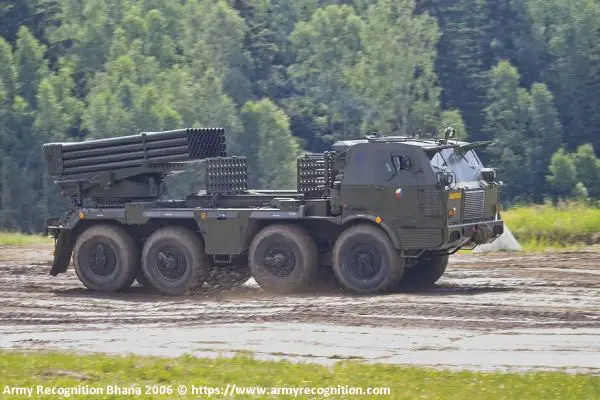Multiple Launch Rocket Systems.
M270A1 MLRS.
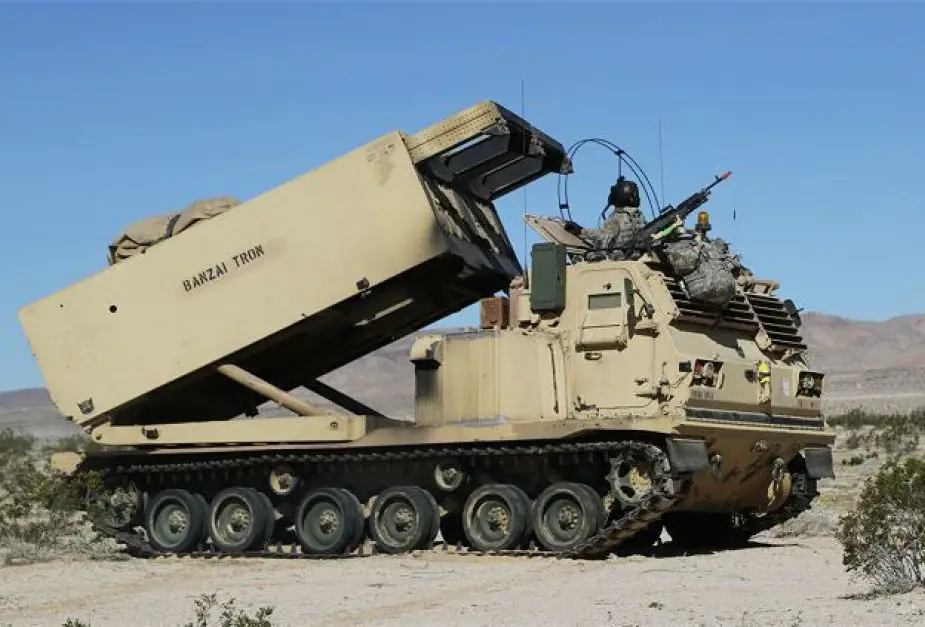
The M270A1 is an upgraded version of the American-made M270 MLRS (Multiple Launch Rocket System) designed and manufactured by the U.S. Company Lockheed Martin. The M270A1 MLRS is a combat-proven, mechanized artillery weapon system that provides the combat commander with highly lethal, all-weather, precise rocket and missile fires that defeat point and area targets in both urban/complex and open terrain.
Country users: France, Finland, Germany, Italy, South Korea, United Kingdom, United States.
Description
The M270A1 is an upgraded version of the American-made M270 MLRS (Multiple Launch Rocket System) designed and manufactured by the U.S. company Lockheed Martin. The M270A1 MLRS is a combat-proven, mechanized artillery weapon system that provides the combat commander with highly lethal, all-weather, precise rocket and missile fires that defeat point and area targets in both urban/complex and open terrain. In December 2008, the U.S. Army directed those chassis improvement requirements identified in the approved High Mobility Rocket System (HIMARS) Operational Requirements Document be incorporated in the M270A1 Multiple Launch Rocket System (MLRS) launchers. In July 2015, over 100 artillery rockets were launched at White Sands Missile Range, or WSMR, to test the latest version of the M270A1. The test, conducted at WSMR's G-16 impact area, saw an M270A1 MLRS vehicle equipped with the new armored cab, fire 138 rockets to ensure the improvements didn't negatively impact the vehicles' mission performance. The M270A1 is in service with the US Army, Marine Corps, and other NATO countries offering a highly mobile and responsive multiple rocket launch system with minimal collateral damage. The M270A1 MLRS provides 24-hour, all-weather, lethal, close- and long-range precision rocket and missile fire support for Joint forces, early-entry expeditionary forces, contingency forces, and Modular Fire Brigades supporting Brigade Combat Teams. On June 6, 2022, the UK announced the delivery of M270B1 to Ukraine, a British version of the US M270A1.
M270A1 variants:
No variants at this time
Technical Data
-
Armament
The M270A1 carries and fires two launch pods, each containing either six rockets or one missile that can be fired individually or sequentially. Rockets have a range beyond 30 km, and the Army TACMS Block IA missile can reach beyond 300 kilometers. The M270A1 can fire different types of rockets including the extended-range (ER) rocket, the reduced-range practice rocket (RRPR) with a range of 8 km to 15 km, and the AT2, which dispenses 28 antitank mines. The M270A1 can fire all munitions in the current and planned suite of the MLRS Family of Munitions, including Army Tactical Missile System missiles and Guided MLRS rockets. The Guided Multiple Launch Rocket System (GMLRS) is capable of producing precise, destructive, and shaping fires against a variety of target sets. There are two fielded variants of the GMLRS: Dual-Purpose Improved Conventional Munitions (DPICM), designed to service area targets; and the Unitary variant with a single 200-pound-class high-explosive charge to service point targets with low collateral damage. The M270A1 also fires the long-range Lockheed Martin Army Tactical Missile System (ATACMS) guided missiles. For the latest variant of the M270A1, a 7.62mm machine gun is mounted on the top of the crew cab.
-
Design and protection
The M270A1 is based on a rebuild M993 Carrier tracked chassis (a derivative of the Bradley Fighting Vehicle). The layout of the M270A1 is similar to the M270 with the Launcher Loader Module mounted at the rear of the vehicle and a fully enclosed cab at the front of the tracked chassis. The upgrades of the M270A1 include cab and hull modifications to improve occupant survivability, and suspension modifications to accommodate the vehicle’s increased weight. The three-man crew consists of the driver, gunner, and commander seated in the fully enclosed cabin. All firing operations are carried out from inside the cabin. The latest variant of the M270A1 uses a new Improved Armor Cab (IAC) to increase the protection of the crew and the addition of mine protective seats. The U.S. Army wanted to provide greater crew protection across all fielded MLRS launchers comparable to that provided by the HIMARS. The M270A1 IAC is designed to protect the crew against various direct fire, mine blast, and underbody fragmenting improvised explosive device threats.
-
Mobility
The M270A1 MLRS uses a derivative chassis of the armored infantry fighting vehicle Bradley named M993 as the M270. The suspension system includes torsion bars, and on each side, there are six dual rubber-tired road wheels with the drive sprocket at the front and the idler at the rear. There are two track-return rollers that support the inside of the track only and one double roller. Hydraulic shock-absorbers are fitted to the first, second, third, and sixth roadwheel stations. The M2170A1 uses the same power pack as the M270. It can run at a maximum road speed of 64 km/h with a maximum cruising range of 483 km.
-
Combat Equipment
The standard equipment of the M270A1 includes an overpressure ventilation system that prevents rocket fumes from entering the cab and the vehicle is also equipped with a filtration unit to protect the crew from chemical, biological, and radiological threats. Equipment capabilities permit a reduced crew, or even one person, to accomplish a complete fire mission including the loading and unloading operations. The main improvements of the M270A1 include an Improved Fire Control System (IFCS), the Improved Mechanical Launch System (ILMS), and the extended range rocket (ER-MLRS). The IFCS provides additional capacity to accommodate complex munitions and modern computer electronics, including video display, onboard navigation with a global positioning system, architecture for ultrafast signal processing, and advanced mission software. The ILMS provided rapid responses to time-critical targets by reducing time to aim by 70% and by reducing reload times by 50%. The ER-MLRS extended the current range of the basic rocket from 31.8 km to a new range of approximately 45 km. A Global Positioning System-aided navigation system for the launcher was developed as part of IFCS to supplement the existing inertial position-navigation system.
Specifications
-
Armament
12 rockets or two missiles
-
Country users
France, Finland, Germany, Italy, South Korea, United Kingdom, United States.
-
Designer Country
United States
-
Combat Equipment
NBC protection system, Improved Fire Control System, Improved Mechanical Launch System, Global Positioning System, extended-range rocket system.
-
Crew
3
-
Armor
Armor crew cabin protection against small arms and shell splinters. The chassis provides protection against mine blasts and IEDs.
-
Weight
26,100 kg loaded; 20,450 kg empty
-
Speed
64 km/h road speed
-
Range
483 km
-
Dimensions
Length: 6.97 m; Width: 2.97 m; Height: 2.61 m traveling; 5.92 m elevated
























